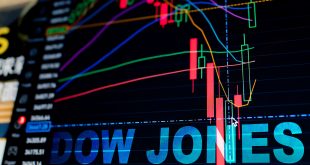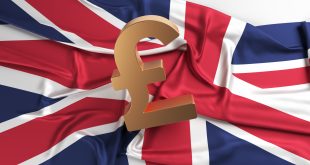Amid gloomy UK PMI data and a slowing global economy, the pound sterling falls. The GBP/USD pair declines 0.42% to trade at 1.2567 as a result of the UK’s S&P Global/CIPS Composite PMI falling to 48.6, entering contraction zone for the first time since January. The pair is trading at 1.2564 at the time of writing.
The UK central bank is anticipated to hike rates by 25 basis points despite weaker-than-expected PMIs. The United States’ factory orders data exceeded expectations but remained in recessionary zone, which may have an impact on the Fed officials’ decision at the ensuing meeting.
The UK’s business activity entered the recessionary zone on Monday, which caused the Sterling to lose its Monday gains versus the dollar. This, together with weaker-than-expected global services PMIs, encouraged movements towards safe-haven assets. Because of this, the GBP/USD is currently trading at 1.2567, down 0.42% from its daily high of 1.2631.
The UK S&P Global/CIPS Composite PMI fell to 48.6 in August from 50.8 in July, its lowest reading since January, during the European session. This decline was mostly due to a declining Services PMI, which registered 49.5, below the 50-point threshold that separates expansion from contraction zone. Meanwhile, data from China and the Eurozone (EU) showed that most of the world’s economies are slowing down.
Despite the fact that the data indicates that the Bank of England would not be justified in raising rates further, money market futures indicate that a 25-bps rate hike is anticipated. Since Andrew Bailey and company started their tightening cycle in December 2021, there is an 87% chance that the BoE will increase the Bank Rate for the fifteenth time. Market participants predict that the BoE will raise interest rates one more in early 2024, as depicted by the bottom image.
According to the US Department of Commerce, August factory orders in the US were down 2.1% instead of the anticipated -2.5%. This comes after gains in four consecutive months. The Federal Reserve’s 525 bps of tightening has continued to chill the economy.
Fed Governor Christopher Waller stated that the Fed has discretion over the next interest rate decision in the news regarding central banks. Later, Cleveland Fed President Loretta Mester stated that the Fed would not wait until inflation reaches 2% before lowering rates or continuing to tighten monetary policy.
The 10-year Treasury note yield has increased six basis points to 4.263%, supporting the US dollar (USD) as US Treasury bond yields are gradually rising. The US Dollar Index (DXY), a gauge of the value of the dollar in relation to a group of rival currencies, rises 0.60% to 104.777, its highest level since March 13 of last year.
The US ISM Non-Manufacturing PMI announcement for August is expected to reveal a slight slowdown from 52.7 to 52.5 in the coming events.
The S&P Global Services PMI is also predicted to show a similar trend, at 51 as opposed to 52.3 in July. If both values match forecasts, the US Dollar may be under pressure. Such results might strengthen the Federal Reserve’s September pause and lessen the chance of a further interest rate increase in November.

 Noor Trends News, Technical Analysis, Educational Tools and Recommendations
Noor Trends News, Technical Analysis, Educational Tools and Recommendations




